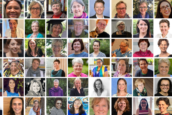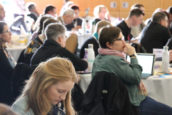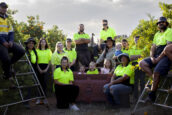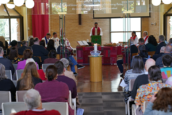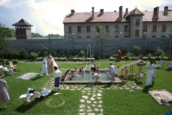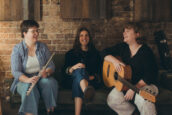
What do you get when you combine a Church with a specialised school for troubled teens? Margaret Jurd College — an unique high school in the suburbs of Newcastle, nestled on the grounds of Shortland Uniting Church. In this first of a three-part series about Margaret Jurd, we introduce you to the special purpose and fascinating history of a vital social service and a local Christian group.
Shortland no longer has a typical church setting. On one side of the church building is a basketball court; the other, demountable classrooms for Margaret Jurd College. The old hall has been converted into the College’s offices. Every weekday, up to 60 students study, jostle, and chill, chat or pour their hearts out on the grounds of a Congregation which has forged a novel path into community outreach.
Reverend Ray McIlwraith plays handball and lends an attentive ear. Long-standing member of his Congregation, Syd Hingley, mows the lawn. Ladies from the Congregation bake cakes and cook BBQs at special events, and hold craft mornings during school hours. Throughout the week, they bring a Christian presence into an environment that has the extreme highs and lows of adolescence. Remember: this is a school created for young people who have been kicked out of every other school or didn’t fit within the mainstream education system.
A ministry of the Uniting Church of Australia, Margaret Jurd provides tailored education to year nine and ten students who are at risk of slipping through the cracks of the standardised way we do schooling. Assisting those that most other schools do not support. can be a challenge for College staff. But heart-warming stories of care, concern and personal growth emerge from the student body [for some examples, see side panels]. These stories speak volumes about a place that is doing great good for many children who have often only experienced the opposite.
“I think it was a brave thing for the Congregation to do,” summarises Rev. McIlwraith. “To just say, ‘Look, we’re going to give our land away to this school.’” Better known as Rev. Ray at the College, Rev. McIlwraith joined the parish after the Margaret Jurd partnership had been arranged in 2009-2010. “They were searching; looking for The Lord to lead them in a certain direction because they were just one of many dying little churches.”
Such a partnership between a vital social service and a local Christian group should grab our attention. As debate repeatedly simmers and rages about how best to use the property and possessions of Congregations, Shortland is a bold signpost. An unusual demonstration of Christian witness by sharing what it has with those who need it.
History lesson
Melise Sutton is the College’s manager. She’s a lot like a principal, just with more to do. Full of genuine concern for all her students, Melise remains gobsmacked by the gifting of land and buildings several years ago. “I didn’t think for a minute that any Congregation would do what the Shortland Congregation did. It still amazes me. I know how attached people get to their churches.”
The College was previously known as the Margaret Jurd Learning Centre. Since 1992, and before Shortland, it had been located in a non-descript two-storey building at nearby Lambton. The Centre grew out of the Newcastle Youth Service, an initiative largely instigated in the mid-1960s by educator Margaret Jurd, a Christian philanthropist. Like a shelter or refuge that incorporated education, the Service developed out of Margaret’s desire to practically help disadvantaged people, especially youth. Margaret died in 1984, three years before Hazel Hawke opened the Margaret Jurd Learning Centre for at-risk young people. Melise never met Margaret but feels strongly that she knows “what her heart was”. “We share the same passion for young people,” says Melise, who has a photograph of Margaret by her desk. “There’s nothing more addictive than seeing someone’s life improve.”
The Lambton site combined residential care and education for a small number of special-needs students. But space was limited and the facilities were outdated.
However, in 2009, plans to expand and upgrade were sent off in new directions, due to changes to government funding. When churches in the Hunter Presbytery were approached by Margaret Jurd Board members about how individual Congregations could help, Shortland reacted quickly. Within months, the Congregation held various meetings, and dealt directly with the Board. “There were a lot more positives than negatives,” reflects Congregation chairperson Margaret Hingley on Shortland deciding to invite Margaret Jurd to live with them.
“People in churches can become very protective of their own properties. We were an ageing, smaller Congregation and we could see the benefits of reaching out to young people; to give them a good chance of changing their lives, concentrating on education. To give them a future they may not have got in mainstream schools. We felt, as a church, this is a very positive and Christian way to share our property.”
By the middle of 2010, with the backing of nearby Wallsend Congregation, Margaret Jurd College moved in to Shortland’s buildings and sizeable grounds. The old church and the new school have since enjoyed a close bond. Notably, there is a respect between the students and parishioners that defies stereotypes of younger people wanting nothing to do with Christians or their churches.
- Categories: Features








